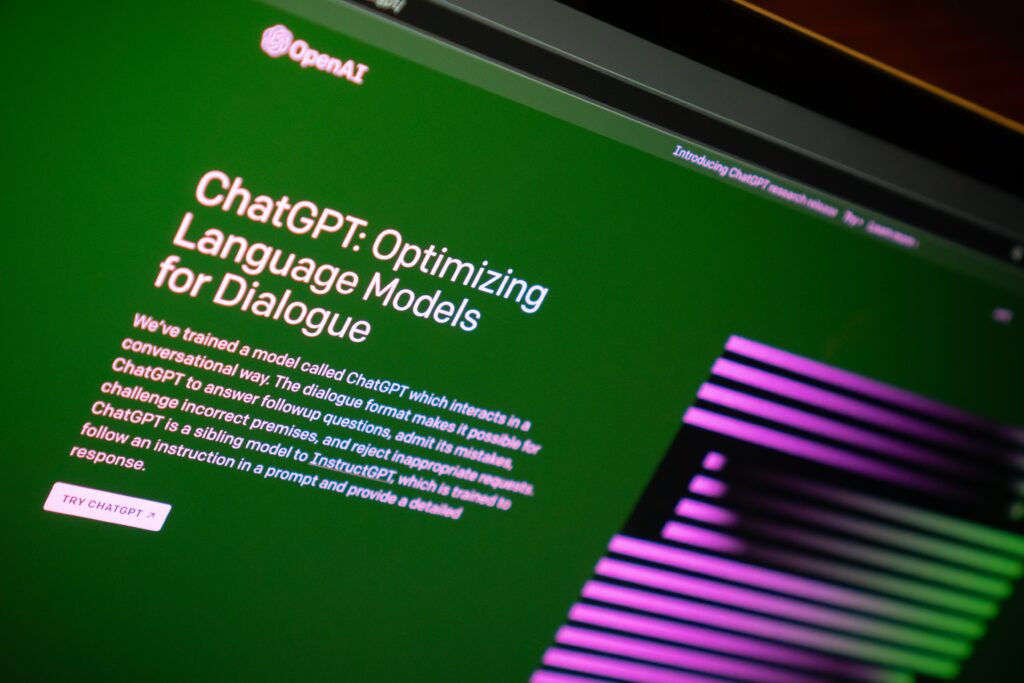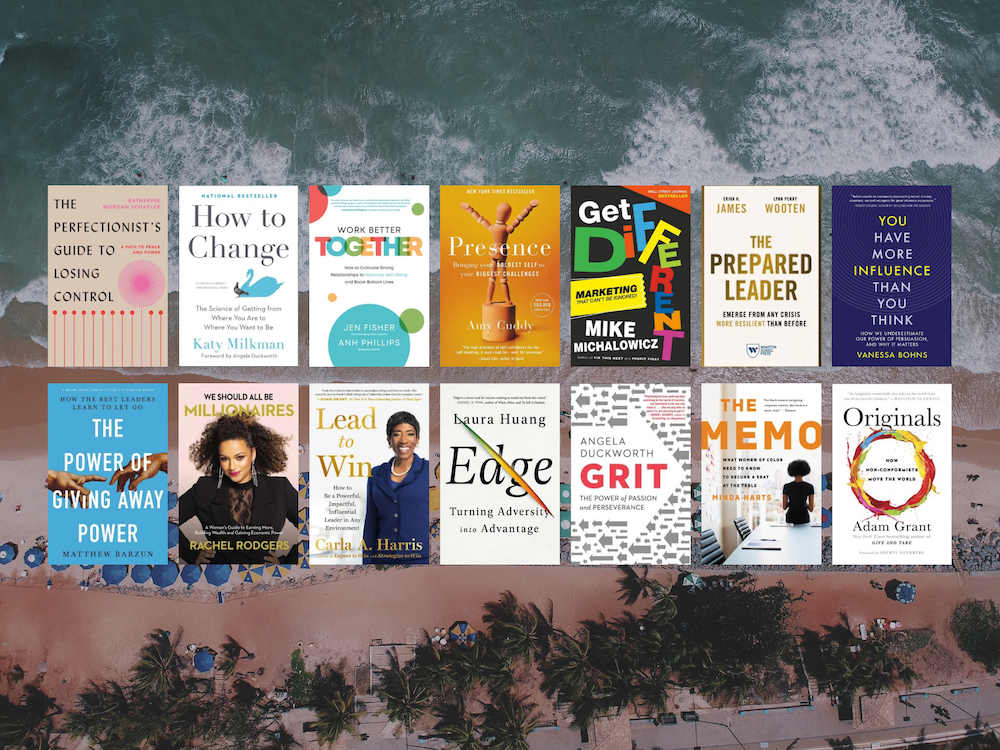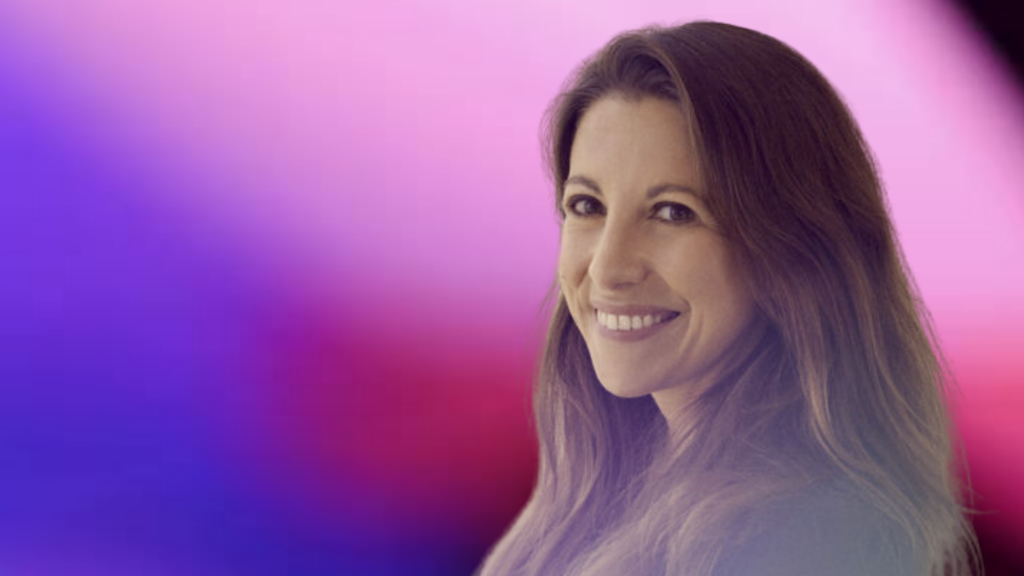ChatGPT: will it transform how we work and live — and MBA?

Need more time in your day to get work done? Maybe help generating school essays, answering open-ended analytical questions, drafting marketing pitches, developing scripted content, or writing computer code? Chances are you’re either a part of the group of professionals who are cautiously curious about ChatGPT, or the group that’s actively exploring the functionality of this emerging technology.
Even as the artificial intelligence application is having a major moment and exploding on the internet, it isn’t necessarily new. ChatGPT is powered by an AI language model that’s nearly three years old — OpenAI’s GPT-3 — and the chatbot only uses a part of its capability. So why is it such a hot topic right now? Because it’s more accessible than ever before.
Like all generative AI systems, ChatGPT is a tool. With applications across all sectors and inundating universities, David Schweidel, Professor of Marketing at Emory University’s Goizueta Business School, says this technology is not going away anytime soon.
“The way that we go about educating students has to fundamentally shift to recognize where technology is today,” Schweidel tells MBAchic.
Marketed as a very advanced autocomplete — the model processes user text prompts and tries to predict what’s most likely to come next. This technology can help users learn key concepts and techniques to complete a wide range of tasks from content generation to sentiment analysis, data extraction and translation. But it isn’t without complications and controversy.
ChatGPT broke the internet. But is it groundbreaking?
Some critics describe it as nothing more than a brilliant PR move that helped OpenAI score billions in Microsoft investments.
Speaking to the Big Technology Podcast, Yann LeCun, Chief AI Scientist at Meta and professor at New York University, said “ChatGPT is not a particularly interesting scientific advance,” and described OpenAI which was originally founded by Elon Musk and Sam Altman in 2015 — as anything but open when it comes to their AI research. His reference of course is to the artificial intelligence research organization’s 2019 transition from a nonprofit to for profit business model. LeCun called ChatGPT a “flashy demo” built by talented engineers void of “any internal model of the world” and said it is merely churning “one word after another” based on internet inputs and patterns.
Others have used the phrase stochastic parrots to describe this type of tech. “They’re really just parroting back the words, the phrasing that are part of the data that they were trained on,” Schweidel says. “There’s no sentience here, there’s no kind of true intelligence here that can validate these facts. It’s just spitting back a very well-structured word salad.”
Still, the positive potentials of emerging AI offer innovation.
Imperfect as it may be in its ability to execute the tasks users dish out with total accuracy, virtually no industry will fall outside of ChatGPT’s reach. From MBA studies to medicine, finance to creative content development, how will businesses and individuals start incorporating this technology? By saving time.
“I can draft emails from bullet points, I can put together an outline, or I can put together a quick synopsis on a particular topic,” Schweidel described. “It’s not going to get me all the way there because I don’t know if it’s true, it may not be written in a tone that I would choose to use, but rather than starting from scratch, I’m starting from third base.”
At a recent Microsoft press event the company demonstrated its new AI-powered search capabilities in Bing, and also announced a new version of its Edge web browser. With the new browser, web users can summarize search results with AI’s help and converse with AI chatbots to get questions answered, among other things. As Microsoft CEO Satya Nadella noted, the team wants to stay true to its AI Principles and acknowledged that, as with every new technology, it’s important to remain cognizant of the potentially negative consequences. “It’s about being also clear-eyed about the unintended consequences of any new technology,” he said. He stressed that Microsoft wants to use technology that enhances human productivity and that is aligned with human values.
“It’s only a matter of time before we see this incorporated into Microsoft Word,” says Schweidel. “What if we could incorporate this into Microsoft Excel? Imagine being able to dictate or talk to a spreadsheet in natural terms what you’re trying to do, and have it craft the formulas that you might need.”
Think beyond streamlining work projects, and consider the ease of checking off personal to-do’s too. You know that dream vacation to Italy you’ve been putting off? Consider that 5-day itinerary created, and emailed to your family with links to book your travel and accommodations, with just one search.
The art of responsibly consuming content
Even though the original goal behind OpenAI was to create ethical, beneficial artificial intelligence to counter potentially nefarious technology being built elsewhere, ChatGPT can easily churn out convincing fake news materials. In the past, other language-based bots like Meta’s Blenderbot and Microsoft’s Tay were quickly shown capable of generating racist or inappropriate content. Chatbot AI systems also carry risks because of inherent algorithm biases that can skew results, sexualize images or even plagiarize, as consumers testing the service have discovered. This darker side of tech is made even more troubling when you consider that researchers have found accurate stories rarely reached more than 1,000 people, yet the most prominent false-news items presented as truth routinely reached between 1,000 and 100,000 people, about a 70 percent gap.
In a perfect illustration of the importance of fact-checking chatbot data rather than blindly trusting its accuracy, Google’s parent company Alphabet lost $100 billion in market value in just one day after its new chatbot Bard shared inaccurate information in a promotional video. In the Twitter post, a GIF image displays a user asking Bard, “What new discoveries from the James Webb Space Telescope (JWST) can I tell my 9-year-old about?”—to which the service responds, saying the telescope “took the very first pictures of a planet outside of our own solar system.” Despite the chatbot’s claim in the ad, NASA reports the first picture of a planet outside the Milky Way was taken by the Very Large Telescope in 2004—some 19 years before NASA’s Webb telescope. Yikes. Probably time to give tech a rest and bring in the human-led PR team to pull a few overnighters after that misstep.
With endless mountains of digital content available without original source ties, media literacy is on everyone’s mind. Critics caution users to be diligent and mindful of AI models presenting statements that appear authoritative but lack any real legitimacy. While big tech is actively working on various approaches to demystify dupes, the onus falls on individual users to assess the validity and veracity of the information AI systems like ChatGPT present.
Some educators ban bots
Since its release, professors everywhere are among those both concerned and amazed by the far reaching capabilities and complications that come with ChatGPT user experiences. Some are experimenting with lockdown browsers, others are deploying new AI detection tools.
Aimed at protecting academic honesty, some education officials are committed to blocking student use of ChatGPT completely. New York City schools announced completely blocked access to the program, with a spokesperson citing “negative impacts on student learning, and concerns regarding the safety and accuracy” of content. The move from the nation’s largest school system could have ripple effects as schools across the country grapple with how to navigate the tool.
“The introduction of new artificial intelligence technologies into schools that enables students to auto-generate essays has the capacity to blow up our entire writing education curriculum,” Peter Laffin, founder of Crush the College Essay and writing coach, told Fox News.
Others embrace emerging technologies
Pivoting and embracing remote learning wasn’t without its challenges, but three years later remote models are a regular part of academic and professional worlds. Likening the current climate to the way higher education needed to adapt during the height of the pandemic, some educators are leaning into this emerging technology rather than shying away from it or outright banning it.
I think we’re at a similar kind of inflection point,” Schweidel says. “If we’re worried that the AI is doing everything, maybe that tells us that the way we were evaluating students isn’t testing knowledge in the way that we had hoped it would be testing them.”
Schweidel described business schools as platforms to prepare students for their next career step, tasked with the challenge of considering how this new technology can be integrated into the classroom to help students dig deeper and problem solve.
“Students should be experimenting with this and seeing what are the capabilities, so that they can figure out what are the parts of the job that I need to put my time into? Let the machine take over the grunt work,” Schweidel says. Let the machine take over the parts that are incredibly repetitive and invest your effort in the places where the machine is still coming up short.”
As various professional industries are learning about ChatGPT collectively in real time, it’s important not to frame this AI as a magic wand solution. While it can create more effective time management, reallocate resources to create more efficient work days, and help inspire ideas — it’s got to be used like all tools we have at our disposal: with care and consideration.
“We can’t replace human judgment and human knowledge entirely, we still require that human touch to fine tune things,” said Schweidel. “There are parts of the process that we can automate that give us a lot of time savings, but these AIs are only as good as what they’re trained to do and right now, these are very generalized tools. They’re not tailored to any specific application. Now, that’s not to say that’s not coming.”

Photo by Jonathan Kemper








Such a fascinating read about what ChatGPT means today and what’s next — thank you to Torri and Professor Schweidel!